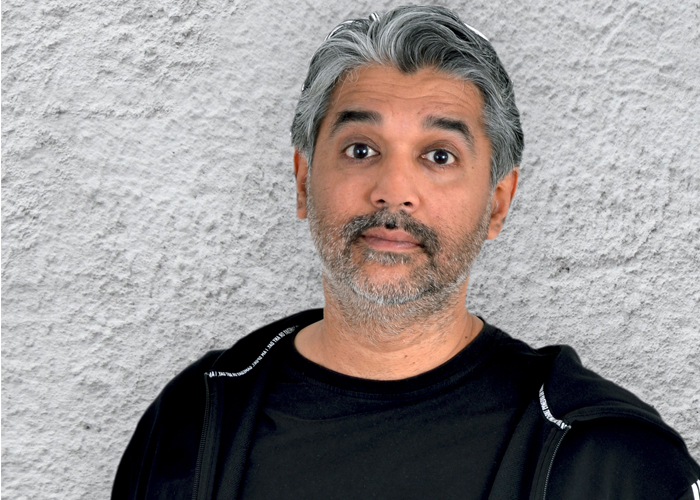
Let’s get this straight. Traditional advertising is dead. Stop paying your creative agency the equivalent of a four-bedroom villa in Dubai Hills every year just so that the agency’s ECD and the creative team can go on booze-fuelled lunches and call them ‘brainstorming’ sessions.
Unless…
Every single concept they commit to is backed by real science. Real data.
Believe me when I tell you this; I am not raining on the creative parade. Far from it. All I’m saying is your creative message needs to be concretely rooted in real facts.
I was a traditional Creative Director for many years. I know how we work. We come up with a concept first and a rationale later. The correct title for us should be EPR – Executive Post Rationalizers. One thing we hate is when real facts get in the way of our concept. Oh, there’s nothing that pisses us off more. I promise you.
Luckily I’m not a traditional CD anymore. Give me science and give me creativity and I will always pick science. Why? Because science sells. Mere creativity entertains.
How did I change my mind? I changed my mind when I started my own agency and I realized a real-world truth. I’m only as useful as my clients’ last sales performance. If my client is not exceeding his sales targets then I’m a pretty horrible partner, aren’t I?
Worse, I’m going to be up for pitch every year pitted against other agencies that are way more creative and hip than I am. And my concepts are going to be judged on a subjective yardstick which defies all logic. As a business owner, I could not take that risk. I have an entire team of hard-working individuals that rely on our agency’s success to put food on the table. We were not in a position to threaten that.
So we collectively decided on a single-minded ethos for our agency.
If our clients make money, we make money.
Simple.
But somehow, this mindset seems to get lost in large agencies with a huge portfolio. Because one huge measurement of success is the number of creative awards the agency wins.
Let’s think about that for a second. We measure success by how many awards WE have won at an award show organized by OUR peers. Reminds me of that Obama meme where he’s putting a gold medal around his own neck.
Possibly the only saving grace to this phenomenon is the advent of awards like the EFFIES. Show me how you made your client money. Because that’s what’s going to keep the economy moving. Not the Lion on your shelf.
Again, don’t get me wrong. I am not raining on the creative parade. All I’m saying is your Lion better be backed by real science and confirmed ROI for that Lion to really roar.
I’ll be honest. As much as I would love to create amazing concepts for amazing clients and hopefully win awards for our agency, I neither have the resources or, frankly, the talent to do that.
Instead, we micro-focus on big data to help us steer strategy and client decisions with the sole aim of increasing business.
And this has never been more important than right now.
Allow me to briefly identify some of the ways we use data to create the optimum environment for a successful business.
- Use data to identify the consumer decision-making process. This not only helps us in retaining existing customers but attracting new ones as well. We then use this data to structure our marketing message.
- Use data to create hyper-accurate buyer personas based on content consumption habits. This can include sites visited or how and where they interact on social media platforms.
- Use data to create relevant content for specific buyer personas. Within each target audience lie multiple iterations of the buyer persona. Data allows us to identify each distinction and target that distinction with tailor-made content.
- Use data not only for cold hard facts but to understand consumer sentiment as well. Using multiple data points across social media platforms, blogs and review sites we can gain considerable insight on what moves our target audience – at an intrinsic level. This allows us to really dial in on the key emotions that will encourage readiness for purchase.
- Use data to personalise and customise digital user experiences based on prospective customer’s usage behaviour and affinity towards messaging & design. Thus, creating an experience we know the customer is more likely to engage with.
- Use data and machine learning to implement semantic search into the client’s website. Semantic search basically allows users to search using normal language instead of specific keywords. Search engines have been implementing semantic analysis into their engines for years now in order to make searching more efficient and natural. By implementing this technology into our clients’ websites, we can make chatting to a ChatBot seem like talking to a human as well as increasing the chances of a user arriving at their search query far more quickly and efficiently. Reputable case studies have shown an increase in conversion by up to 15% with the aid of semantic analysis. For some clients that can mean millions.
- Having the right people. Data will never replace good old fashioned human ingenuity. We need good people to make sense of all those numbers.
Data is an ever-evolving beast and we need to be geared to harness those advancements and evolutions to our benefit. Only then will we truly succeed in driving up ROI for every penny we spend.
And, once again, I am not trying to side-line creativity in advertising. All I’m saying is creativity in advertising needs to be less about egos and more about applied science.
Does that make sense? If it does, drop me a note and I’ll take you out for coffee. If it doesn’t drop me a note anyway. I’ll take you out for coffee AND dinner.










